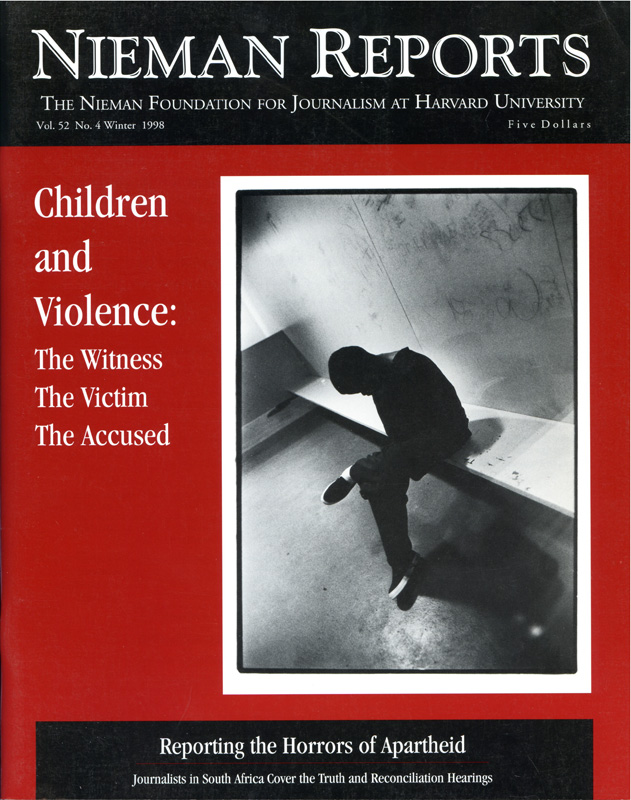Once the Truth and Reconciliation Commission began its work in 1996, South Africa lived through a wrenching and sometimes bitter attempt to understand, explain and even try to make peace with the gruesome realities of apartheid and the media’s role in reporting events that took place under apartheid.
We asked four South African journalists–one from the black press, one from the Afrikaans press, one from the English-language press, and one from the South African Broadcasting Corporation–two questions: How has the Truth Commission been covered by your section of the South African media? What, if anything, did the TRC discover about the attitudes and practices of the media in South Africa during apartheid?
No one we asked from the English-language press agreed to take on these questions. Instead, to reflect that view, we asked Pippa Green, a current Nieman Fellow from South Africa, to adapt an article she wrote about her reporting experiences and observations during apartheid.
Their reports follow.
We asked four South African journalists–one from the black press, one from the Afrikaans press, one from the English-language press, and one from the South African Broadcasting Corporation–two questions: How has the Truth Commission been covered by your section of the South African media? What, if anything, did the TRC discover about the attitudes and practices of the media in South Africa during apartheid?
No one we asked from the English-language press agreed to take on these questions. Instead, to reflect that view, we asked Pippa Green, a current Nieman Fellow from South Africa, to adapt an article she wrote about her reporting experiences and observations during apartheid.
Their reports follow.




